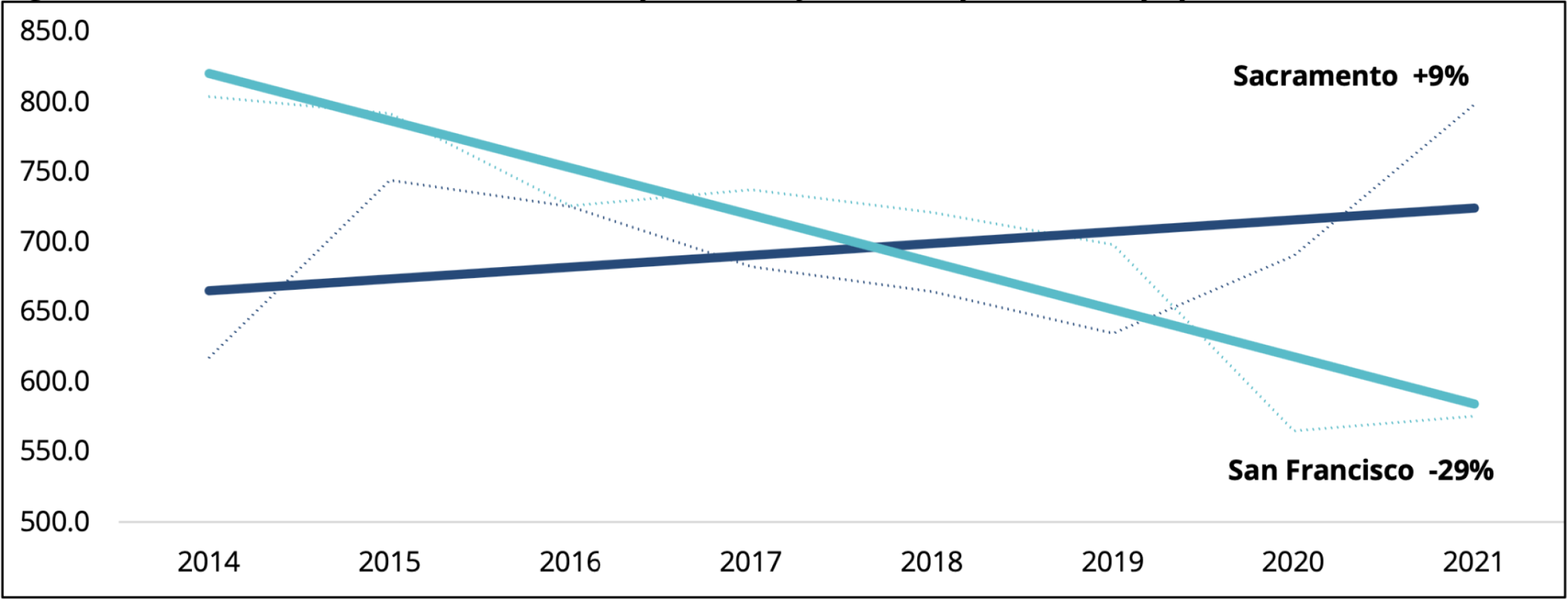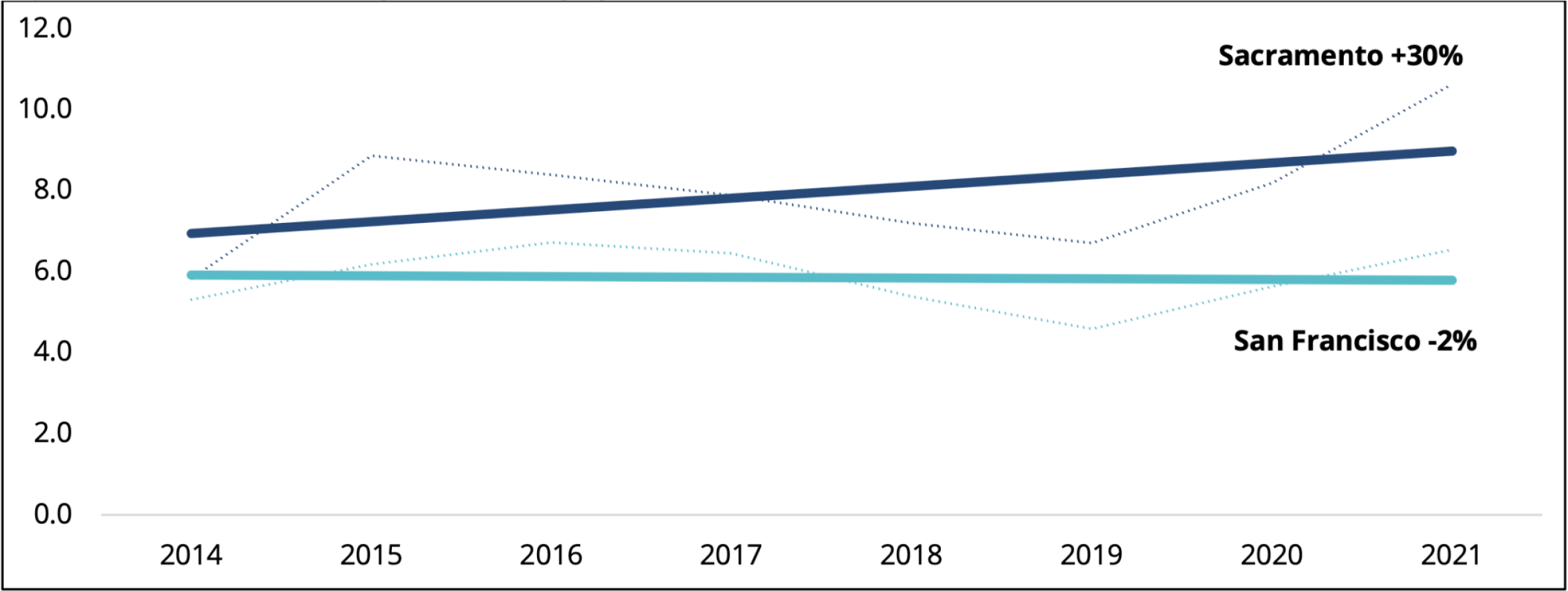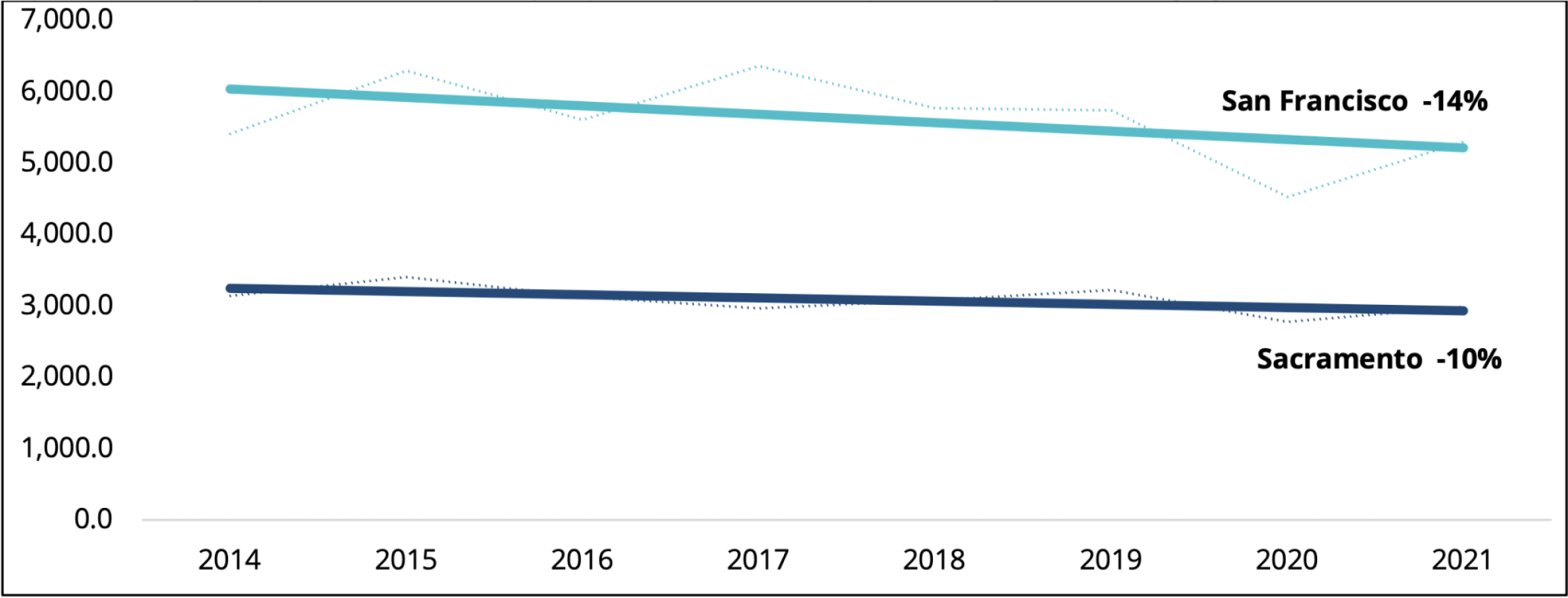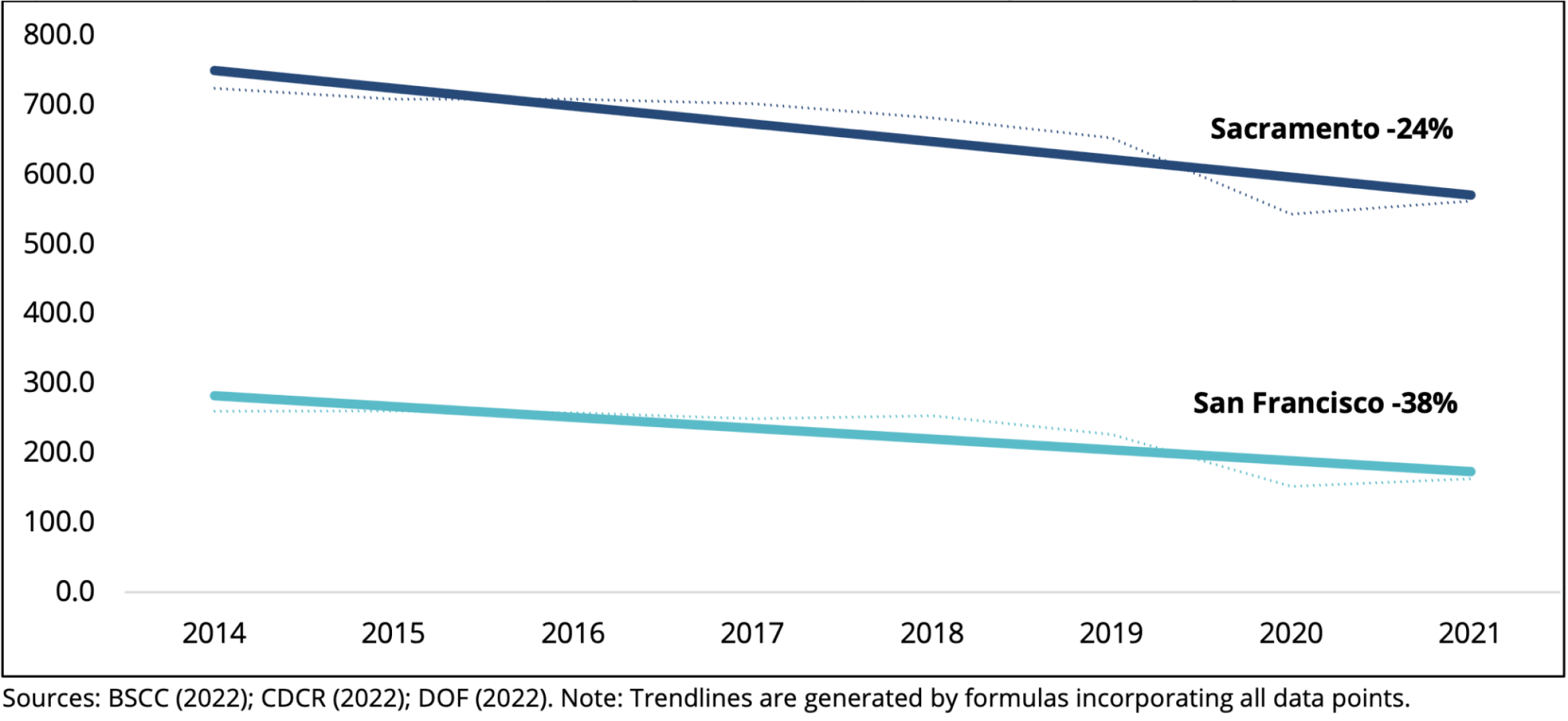San Francisco has seen major decreases in crime amid progressive reforms, while nearby Sacramento is seeing a homicide and violence surge under the leadership of a conservative prosecutor whose policies feature high rates of incarceration. Sacramento District Attorney Anne Marie Schubert has positioned herself as the state’s leading “tough-on-crime” candidate as she criticizes progressive San Francisco DA Chesa Boudin and seeks to unseat California’s reform-minded Attorney General Rob Bonta (Hooks, 2021; Schubert, 2022). Yet DA Schubert’s tenure has coincided with increased homicide and violent crime, lesser declines in property crime, and above average rates of homicide and violent crime for urban Sacramento than in San Francisco. Schubert’s “tough on crime” rhetoric and policies have not delivered lower or falling crime rates.
This analysis compares crime trends during Schubert’s conservative prosecutorial term in office (2015- present) with those of San Francisco’s progressive prosecutors (George Gascón and Chesa Boudin) during a key period in California’s criminal justice reform era. If talking “tough on crime” and incarcerating more people actually reduced crime, we would expect to see a much bigger decline in crime and a lower crime rate in Sacramento than in San Francisco. In fact, the opposite is the case. San Francisco has sustained larger crime declines and achieved lower rates of violent crime than the City of Sacramento since 2014.



